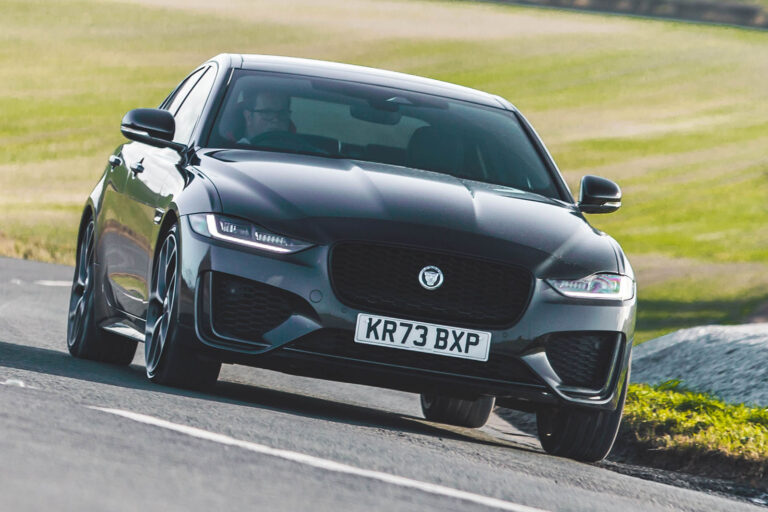Because, while it was a little small by class standards when introduced, this car’s market positioning has crept down a market segment, while its original rivals have crept up. As we’ll explore more fully later, through model renewals and mission expansions, the BMW 3-Series and its German equivalents have become cars that it’s realistically impossible to pay less than £40,000 for, with many big-selling versions ‘transacting’ much nearer £50k.
Meanwhile, while the XE was singularly failing to match the sales volumes of those executive rivals, it was slowly amortising its fixed costs, avoiding complication, and embracing a relative value advantage that now delivers it to market from little more than £33,000 in entry-level diesel form, and from under £37k even as a fairly potent, mid-range, 247bhp four-cylinder turbo petrol.
It’s probably not by chance, then, that in the new range-topping ‘P300 AWD Sport’ trim that we’re testing it in 2024, the XE lines up as an almost exact match on price with Audi’s S3 Quattro saloon, and BMW M235i xDrive M Sport. Both of those Germans are, of course, transverse-engined, natively front-wheel-drive competitors with necessarily higher engine packaging, higher centres of gravity, and less equal weight distributions; and both could be said to be derived from hatchback platforms.
Could these be the glory days of Jaguar’s smallest saloon, then? Looking back through its life, there were certainly times when it had more sound and fury; the demise of the ‘AJ126’-powered, V6 XE S in 2017 being a particular shame – and the short-lived, herocially over-engined Project 8 super saloon being especially hard to forget.
However you see it, Jaguar has just cut down the XE’s derivative range for possibly one last time. There are now only five models left within it in total. Three rear-driven, mild-hybrid four-cylinder D200 diesels (R-Dynamic S, -SE Black and -HSE Black, each with 201bhp); one upper-mid-range, rear-drive, ‘R-Dynamic HSE Black’ P250 petrol; and one final range-topping ‘P300 AWD Sport’ range-topper. The last of those happens to be the only XE now offered with all-wheel drive, and it’s the only one that gets adaptive dampers as standard (‘configurable dynamics’ and uprated brakes are optional on lower-level models).
The range-topping XE we tested weighed in at 1740kg on Millbrook’s proving ground scales, some 89kg heavier than its homologated kerbweight – but fitted with at least some optional equipment (panoramic glass roof, etc) to explain away the ballast.


